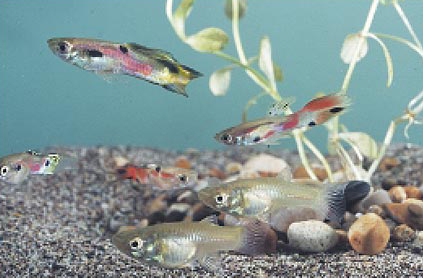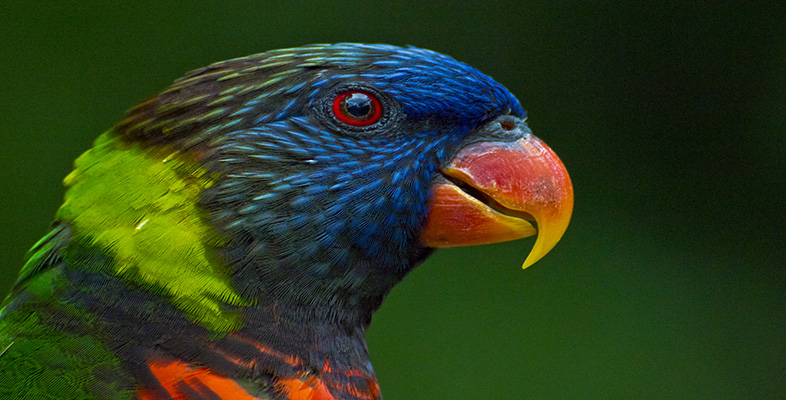3 Natural selection in the guppy
3.1 Introduction
The purpose of this section is to consolidate your understanding of the theory of evolution through natural selection by looking at a specific example. The guppy (Poecilia reticulata) is a small fish whose natural habitat is small streams in northern Trinidad, but it is also a popular aquarium fish. Male and female guppies are very different in appearance (Figure 2); they are said to show sexual dimorphism as male guppies are very much more brightly coloured than females. We will consider how natural selection influences bright coloration in male guppies, and we will do so by considering each of Darwin's four propositions in turn.

